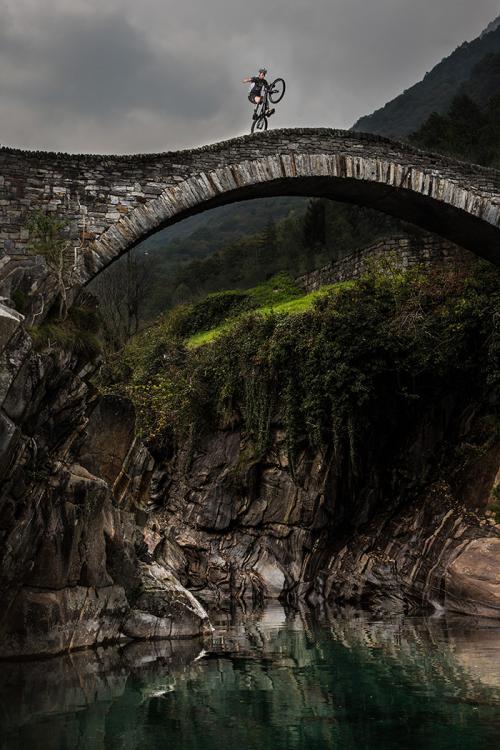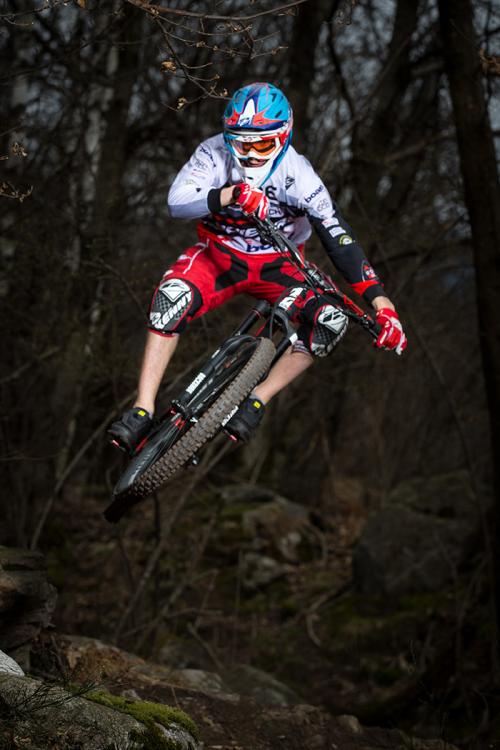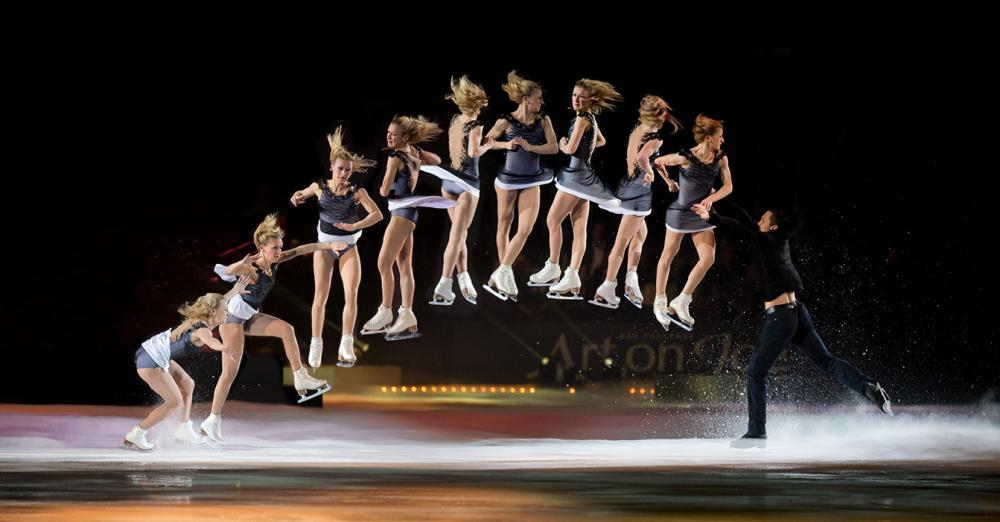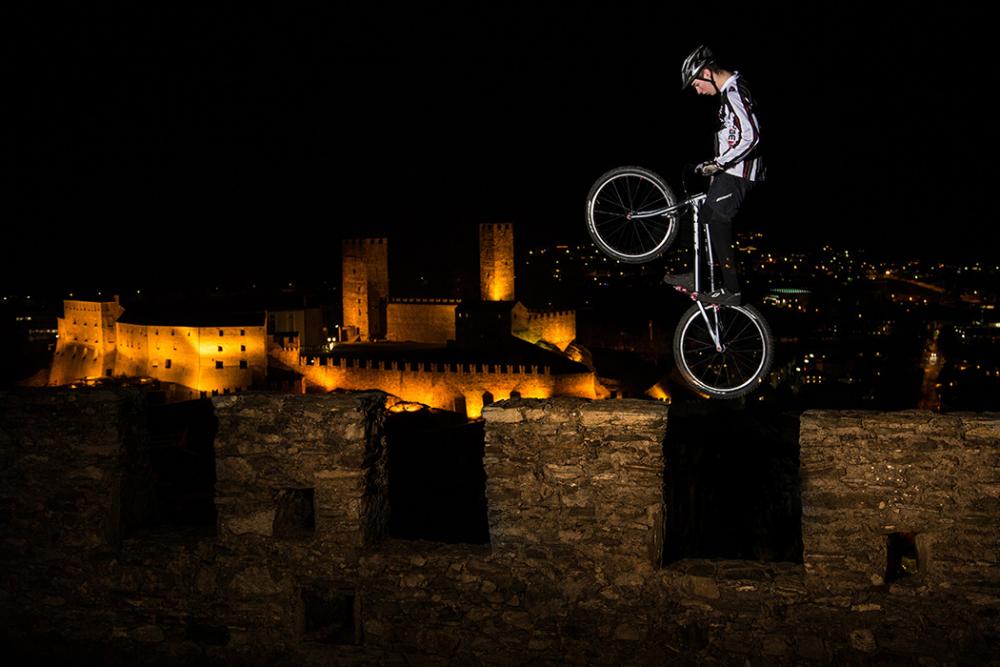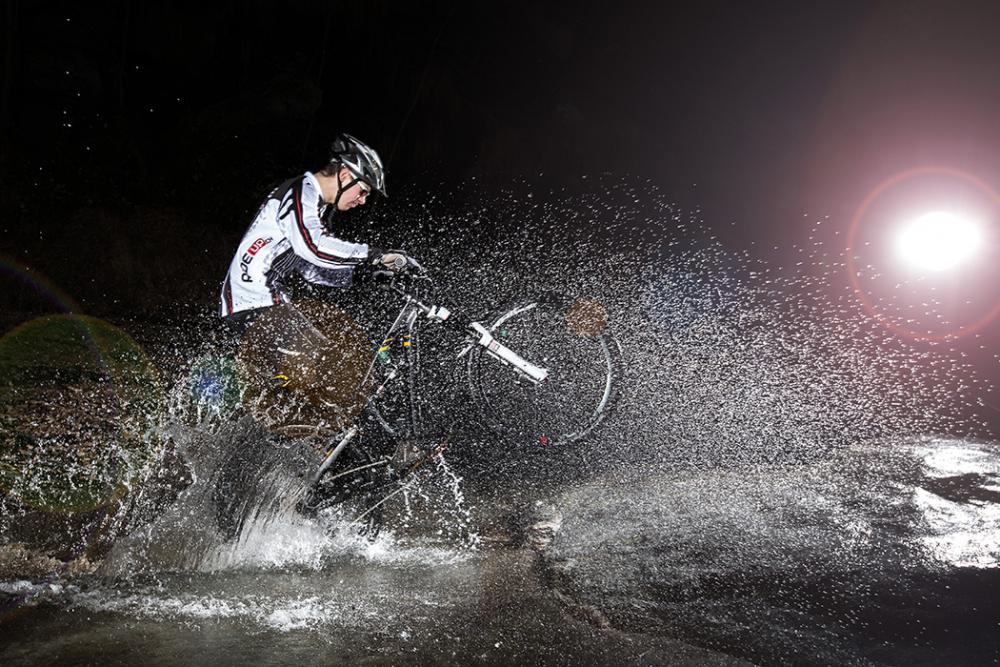
gt3rs
Members-
Posts
1,089 -
Joined
-
Last visited
Content Type
Profiles
Forums
Articles
Everything posted by gt3rs
-
Time to dump Adobe. First impressions of Resolve 14 and EditReady 2.0
gt3rs replied to Andrew Reid's topic in Cameras
On a Win10 gaming notebook i7 7700HQ, GTX 1070 8 GB Vram, 16 GB ram, in Resolve v14b I can do real time edit and quite a bit of grading nodes in real-time on 4k timeline with 1Dx II 4k 4:2:2 MJPEG files at 60fps. I did test h264 files with the new v14b, especially Phantom 4 Pro files.... 4k UHD up to 30 fps perf is quite good, 4k DCI or 4k > 30 fps is not usable without reverting to optimize media. Anyway a big improvements over v12 where h264 4k editing was just impossible with optimize media. Correct and btw the new Stabilizer seems to finally work well. I did a few test with scenes that I could not really stabilize with the old v12.5 stabilizer and the new one seems to do the job. It is also more intuitive how it works. The beta is still quite a bit buggy but a lot of key improvements...as a longtime Resolve user I'm pretty excited about this release. -
The Kodak is in the same ball back as the Nikon and Samsung basically a consumer quality camera that is far away from what professional work would require. Significantly better is a bold statement that I really do see and it has even more issues with stitching due to the cameras being more far apart. It is also cumbersome not being an integrated device but two separate ones with two cards two batteries..... Here a test between these cameras: http://360rumors.blogspot.com/2016/11/4k-360-video-camera-shootout-samsung.html Anyway it was a first good approach but it is at end of life, in fact Kodak has created a new model that removes the biggest flaw of the one that you recommend creating a single device with dual cameras like the samsung and nikon: https://kodakpixpro.com/Americas/cameras/vrcamera/orbit3604k/ But again all these consumers "dual" camera are not that great so I would spend less than possible for example 200 USD for the Samsung and experiment and once mastered the challenges of 360 video move up to a more professional rig. Samsung needs a Samsung phone to remotely control it but you can use it even without a phone as I do because it has a menu system in the camera. Nikon is more compatible with many phones but it has a challenging wificonnection and is more expensive. Also the Nikon does the stitching in the camera that has the advantage of convenience but you loose the flexibility to use 3 party software for better stich. Quality wise are very similar. I have a Samsung my colleague a Nikon. Apparently Samsung is about to update their 360 camera in the next month but at the moment is a rumors. For better quality you would need a 6 cameras rig that creates a 8k video and then have an 8k delivery platform. 4k for 360 video is not enough because you see only part of the sphere and you are zoomed in. Insta360 has created Pro 8K 360 around 3k usd that sounds like a possible step up but we need to see how it perform in real life.... http://www.insta360.com/product/insta360-pro/
-
I agree with the previous two post. Basically you have the Samsung gear 360 and the Nikon KeyMission 360 as consumers and easy to use solution. You can create okish quality content that can still generate the wow effect if the subject/story is great but technically the result is far away from pro quality that we are used on video today. The potential is there but is just too early at this price point (200-500 USD). I have and use quite a bit the Samsung 360 and for the price is good for learning and producing some experiment. Next is the Gopro OMNI that produce better quality video but there is a much more work in the process. Cost around 5k USD Then Nokia Ozo that is probably today the best quality but is very expensive at 45k USD First thing to do IMO is to grab a google cardboard and look at many YouTube 360 videos available done with these cameras to get an idea. You need a phone with a great screen and remember to set the quality of the YouTube video to 4k before putting it in to the cardboard. Normally it defaults to a lower resolution. This is a good one to start watching (cardboard required to get a real feeling of the potential of 360 videos) this one was done with 6 Gopro's similar to the Gopro OMNI rig:
-
Some lenses are nosier than other for example I have no problem with the 24 1.4 and the 50 1.2 with the 1dx II and the rode videomic pro directly on the hotshoe. But the easiest solution is to buy a small arm for the hotshoe and move up and further in front the mic and problem solved. Personally I would not buy STM lenses just for this.
-
https://***URL not allowed***/canon-1d-x-mark-ii-vs-canon-1d-c-which-one-shoots-better-video/ https://***URL not allowed***/rolling-shutter-sony-a7s-vs-arri-amira-canon-c300-5d-mark-iii-1dc-panasonic-gh4/ Basically 14ms for the 1Dx II and 25ms for the 1Dc
-
Can you prove me that other than the s35 mode the 1dc is sharper and superior? Also the 1dx ii has much less rolling shutter....
-
To give you an idea this video (again just a test nothing really good) I took it after 7h of total fly time: Attempting the same maneuvers with a toy drone as you have I would have crashed 50 times:-). If you come from the toy drones that are great to learn the basics you will find the stability of the phantom another world. Prior to the phantom I did fly maybe a total of 2h with the hubsan toy drone (5 min max flight with a battery:-( ) Btw the two videos are not my style of work, I do mostly sports/action so I'm just learning to be able to use it for MTB, Ski, Trial, Horseback riding, Icehockey, etc... to intercut with normal gimbal and tripod work. For me the key point is always if I will use it or not. I only add stuff to my arsenal that I really use.... so I tend to have a few but great stuff that tons of gears that I rarely use.
-
This is why I said "if budget is not an issue". To me it seems that he is mostly afraid of crashing it or not being able to fly it because is to difficult. Having flew only toy drone before I can reassure the OP that the Phantom/Mavic are super easy to fly and most people crash them due to over confidence. It gives you almost too much confidence on how stable and easy is to fly. IMO is not the 60 vs. 100 mbits but the adjustable aperture, dynamic range and better low light that makes the difference. For people that wants to fly for fun and do some video the Mavic is amazing, if the goal is commercial work then for the price difference P4p it is a no brain. Of course you can create great content with p3p, p4, mavic as you can do it with a 5d II but most people don't buy a 5d II anymore.... is not only the camera but the P4p is faster than the p4/mavic with obstacle avoidance enabled and also have backwards obstacle avoidance, it has a super handy mode for slow cinematic takes called tripod mode (mavic has it too) etc... Also the video signal although not yet perfect is much more stable than the p3p. Here in Switzerland the major DJI reseller is selling the original battery at 110$ like most store here, no ebay or strange non reputable stores... It seems that they are all discounting the battery due to the new ones (ca. 2-3 minutes more fly time). But for the price you can buy 3 battery for less than two new ones. If budget is not an issue buy the p4p with DJI care if available in your country (assurance for crash even by pilot mistake), if you don't use it you can sell used for a really good price.... if budget is an issue buy a used p3p... Mavic and P4 are not really worth at current price if the main goal is video for commercial. Yes only a test. I was playing around with the various mode like orbit, active track etc... I was there for a weekend vacation with my girlfriend. I had the drone since 3 days and only 1 battery. The video is just ok it has tons of issues and as you can see I stayed quite far away from the hotel/villa because the drone was soo new to me that I didn't one to take risks. Location is over Lucerne in the Swiss Alps.
-
If the budget is not an issue and you really want to use it for commercial work the P4p is the best choice. Camera has much more DR than gopro, mavic, p4, p3p et… has variable aperture so you can use it to control the shutter speed in changing light without need to change ND filter (for sunny day you still need an ND filter). Also the 4k 60p (althrough is using line skipping so is not same quality as the 4k 30p) is handy for smooth moves especially if you slow them down in post. I have p4p and I flew before only toys drones and I’m not good at flying them. The p4p is super easy to fly and incredible stable. In tripod mode is also very slow and stable that you can pull some shots in very close proximity of branches etc… Now I have more than 20h of fly time, but this video I did after only 50min fly time and as I said never flew a big drone (video is far from perfect but it was literally my 4th fly): https://www.youtube.com/watch?v=NgLfAMh4Miw For any commercial work you need at least 3 battery. I brought two additional p4 batteries that you can find at least here around 100-110 usd (they last 2 minutes less that the new p4p battery). I always wanted to have a drone to add some scenes to my work but I was always put down by the camera quality. The p4p is the first “compact” and “affordable” that you can start working with.
-
It has the dual output because it has the jack and plus the multipin plug (just below the jack) you can see it on the video at 4:00, but not sure if they work both at the same time and the jack processed and the other not and what kind of device you would need for the b-format. On Rode website they have no info yet....
-
Looks really interesting, anyone know what you would need to record in B-Format, I guess it needs an external recorder? How cool would have been if this mic had an internal microsd recorder that could record this B-Format audio.... Will it be able to record both in camera with the defined pattern and simultaneously on the external B-Format recorder?
-
I also find a bit useless to compere the processed output and plus without knowing the settings. Best would be to compare the raw output but unfortunately both camera cannot shoot raw video (even if they would some cameras cook the raw...). It is a bit like comparing two models skins after 5 hours of Photoshop, what skin?:-) Another less scientific way would be to sharpen both in post at the max before it breaks apart and check the details but it will became quickly subjective. I also prefer to have the less sharpening in camera as possible and sharpen it in post and sometime even selectively. I'm testing out the Phantom 4 Pro settings and there at 0 sharpness (default) the 4k 30p file are so over sharpened that make no sense at all you need to dial down the sharpness at -1 / -2 and no sharpening in post to get good video. Anyway I never had a sharpness issue with the 1Dx in 4k, my wish would be a more detailed 1080p 120fps!!
-
In my opinion the codec is not such a disadvantage, yes prores or DNxHR would be even better but the size would be similar. Resolve now supports very well the MJPEG so you can edit directly without transcoding. Scrubbing is extremely fast (make sense is not a LGOP codec) and on a good machine real-time edit and playback is possible. On a basic gaming PC, i7 6700, RX 480 8 GB Vram, 16 GB Ram and an SSD you can edit 4k 60p plus some basic grading, even directly from the CFast card, in real time. As comparison the 4k 60p 100 Mbits h.264 from Phantom 4 Pro in Resolve is just dam slow, scrubbing is so slow that you want to transcode it. So if you are a Resolve user no need to transcode at least on a PC.
-
In Switzerland it was 370 usd at 1dx II launch... now is ca. 430 usd.... It is the European model E8B but I really have no idea why is cheaper here... because the 1dx II is 150 usd more expensive here than in the US. Still too expensive for what it is because it is really just a wifi adapter with no logic because if you use the Ethernet port on the camera you have all the functionality available.
-
canon wft-e8b (in ch was on sale for 370 usd) In theory with an iPad Ethernet lighting adapter you will be able to go directly to the camera but you will not reduce the latency that much (<3-5 ms at best). The latency problem is more due to video streaming over ip than wifi vs. cable. But you can try with a PC or a Mac and EOS utility through the Ethernet port of the camera to see how it works, although EOS Utility is different than the iOS app so is not apple to apple although is apple:-). I'm sure that over Ethernet would be slower than over usb (that has also some latency from my test). Also if I'm not wrong there is no official iPad Ethernet adapter and the iOS has some issue with the custom solution that goes from lighting to usb to Add to dictionary adapter.
-
It works quite well with the Canon WFT (there is no excuse that the camera should have it integrated) and an iphone. I mount the iphone on a cheap manfrotto mini clamp and phone holder on the gimbal so I can control the focus with touch. I still use a 7'' monitor for framing because the latency on the wifi is a bit annoying especially when moving fast. It is a bit stupid to have two screens on the gimbal handle and it is adding more weight on something already heavy but it works. On the cheap side you can even buy a small battery power router ca. 30 usd and use the camera Ethernet port but for me is one battery more to charge and one cable more on the gimbal that I want to avoid. Before getting the WFT I tested with this one: http://www.dx.com/p/hame-mpr-a1-wifi-802-11b-g-n-wireless-3g-router-w-1800mah-battery-charger-dongle-122121#.WE5kvYWcF2Q that I used to use on my old 1Dx. I never tested but I believe that an android phone or tablet could do this role connecting directly to the 1Dx II usb and there you will also have a bit less latency. I did test it with a Surface Pro and it works fine but it is not a device that you want to mount on a gimbal:-) Unfortunately the why that streaming video over wifi works it always introduce latency. Best case is 100-200ms worst case can be up to 1 second or so... Encoding 60fps signal for wifi streaming is also computationally expensive because you need to encode it for a much smaller bandwidth so higher compression. So if a camera needs to encode and save a 4k 60p stream at 400 mbps h264 it needs to re-encode a second version at 1080p 60fps at 5/10 mbps.... and it introduces latency due to encoder, http/udp streaming, decoder, player... Just look at the price of sub 100ms latency wireless (non wifi based) video solutions and you get an idea why it is not so easy or cheap. With the drone industry exploding more and more money goes in to solving digital wireless video transmission latency, range and price. Problem is that most, if not all, "zero latency" solution on the market they don't use standard wifi so you will need a external receiver. This is why DJI Lightbridge is a USB based solution because the video receiver it is in the remote controller and it still has latency.
-
You offer a "in theoretical world base only on my personal opinion" without owning a 1Dx or a Gimbal.... I'm offering a real world opinion using the 1Dx II on a gimbal at 4k 60p using AF in a similar way that the OP is intending to use. You are probably much more skilled and talented than me but the OP did try in real world your "theoretical" approach manual focusing on a gimbal and he was not so happy and I know why, because I'm been there and I don't want to return doing that way. I'm really not sure why you cannot use AF with strobe, these are all done with the 1Dx, strobe and using AF (including long lenses, night shots, backlight, etc...:
-
As far as I have looked in to it the X5s it will not have continuous AF but someday they will get it and improve the latency with the tablet/phone and it will be a really compelling system. Also curious to see if the X5s is not doing line skipping at 60fpst because the P4p (basically a X4s) is doing line skipping at 60p so quite a bit of quality drop from 4k 30 than 60. I'm really happy with the 1Dx II on the Ronin M, if you use the Face AF and the face of the subject is very visible it works very well, for 360 orbits I use continues AF and focus on keeping the AF square on the subject and most of the time I nail it. If you are used to the Ronin M I really suggest to rent them both for 1 day and test it. You would need extension rods for the Ronin M but for a test you can simply unscrew the rods caps and gain a bit on the tilt axis. Regarding CFast cards, many BMC users have brought eBay CFast Lexar 3400 discontinued model. I was a bit worried but I took the risk and ordered one 256 GB for 260 USD after some testing I brought a second one for 300 USD. Since end of May and many TB of video and photos never had a problem. But you need to judge the risk here, I read that somebody had a problem and sent it to Lexar and got replaced with a new 3600. It seems now that they want much more money on ebay... In my opinion this is really where it shines 4k with a bit of slow motion with shallow DOF on a gimbal as a one man band. As far as I know E-M1 II can't do 4k 60p but I have no experience with the AF so I can't comment. Always waiting because something better will show up is a good money saving approach because at the end you will never buy anything. I'm sure that the Sony A7s IIIIII will do 8k 240fps with super AF, full frame but right now is 6 months that I'm using the 1Dx II.... Of course if you never shoot stills, never need 4k 60p and don't care for shallow DOF with camera in movement then the 1Dx II is a total waste of money.
-
It is called progress, when the AF first came on film dslr there was many sports photographer saying the same as you.... I can do it better, I want to have control... Now there is no single sports photographer doing manual AF. While you practice, practice, practice, I do earn money.. To have better movement when the terrain allows it I film while on rollerblades... so try to focus, frame and skate.. but I agree not every body needs this but it seems that the OP is looking for a 4k 60 with AF on gimbal, and this is what I do a lot of times. Before it was f11 16-20mm now is also 50 1.2.. I'm glad that you with your manual focusing with a thumb controller on a gimbal can nail shallow DOF gimbal shots 100% of time (I'm guessing that you don't really do it because is super hard). I work a lot for advertisement and also with pro athletes that cannot get it right neither and so we retake sometime for heir mistake, sometime to have different angles so when I'm not getting it right for my mistake I retake and my clients never complains. If I know is something that I can get only one try I do your way F11....but is rare.
-
STM?!? The DPAF works with almost all EF lenses and I have done commercial work with 24 1.4, 50 1.2, 70-200 2.8 II, 16-35 2.8 II and my last project with the 200-400 F4 using DPAF on professional Ice hockey players for a TV spot. Waste of money it really depends, how much you loose in value on a Sony A7 in 3 years and on a 1Dx, the difference maybe 300 USD a year so not sure that is a waste. 4K60 with shallow DOF on the gimbal is the unique proposition of this camera. Depending on your style and needs it can be a waste or a real money making. So to save money your suggestion is to use a remote follow focus that cost more than the difference between a 5D and a 1Dx and needs an additional guy working on set.... Or simply shoot all at f11, yeah why not use an iPhone then http://www.4kshooters.net/2016/12/05/how-does-the-iphone-7-plus-video-hold-up-against-the-50000-red-weapon-footage/ People should first try the DPAF with a 50 at 1.2 while both subject and camera operator move on a gimbal and then speak. It is really insane how it works. Is it perfect? Sure not and sometime I need to retake the scene but if you learn how the system behave you can pull some amazing moving shallow doff scenes.
-
Considering that you are undecided since a while now why you don't rent it for a day with a CFast card and try it out? You have enough experience to get something out in 1 day and have a peace of mind. I have owned all the 1d series since the III and I could always sell it quite well usually around 50% loss in 3 years.
-
Ah ah this is funny, the OP wants a camera on a gimbal with AF presumably for also shallow DOF and you say the file are too massive instead buy a Inspire with x5s !? Is like "I need a boat" "yes sure you should buy an airplane". In fact both transport people.... Did you check how big are the file from the x5s either RAW or Prores? I can help you, they are bigger than the ones from the 1dx II. You saw a paid by DJI DP using the drone as a gimbal and you think is something practical to do? Last but not least the x5s doesn't have a continuous autofocus, a screen, etc.... You cannot use long lens because the gimbal would not support them and the list goes on.... Having a 1dx II and a Phantom 4 pro I wished the P4p would use MJPEG or Prores instead of this (yes tiny) but non editable LGOP h264 or worst h265 that needs transcoding before using it in Resolve. Don't get me wrong the Inspire 2 with the x5s seems super it is just a great tool for a totally different needs than the 1Dx. Also curious to see the 4k 60p of the x5s because the P4p at 60p is doing line skipping....
-
IMO these are normal EF lenses especially because using Canon Prime Cine Lens you will loose AF one of the best feature of this camera. Second there is no 100mm Cinema Prime from Canon. The 100mm is most probably the 100 L macro. My bet is: 24 1.4, 35 1.4, 50 1.2 and 100L macro depending if version I or II of the 24 and 35 we are talking at a max $5000 new or less.
-
Yes all are visible on the LCD including exp compensation, the only annoying thing is that after a while if in auto iso it switches from showing the real iso value to "auto", a simple half press of the shutter will show again the current iso. If you don't use auto iso then it shows the selected iso value as expected. Maybe there is a trick to always show the value instead of auto. I saw this video over at dvxuser done entirely with the 1dx II that I personally found it very good:
-
x5s and x4s have different mounts than the x5 and need a new osmo that is not yet announced but should come. Dji drones have cooling fans so that makes 60fps possible plus as you said the space


